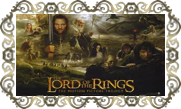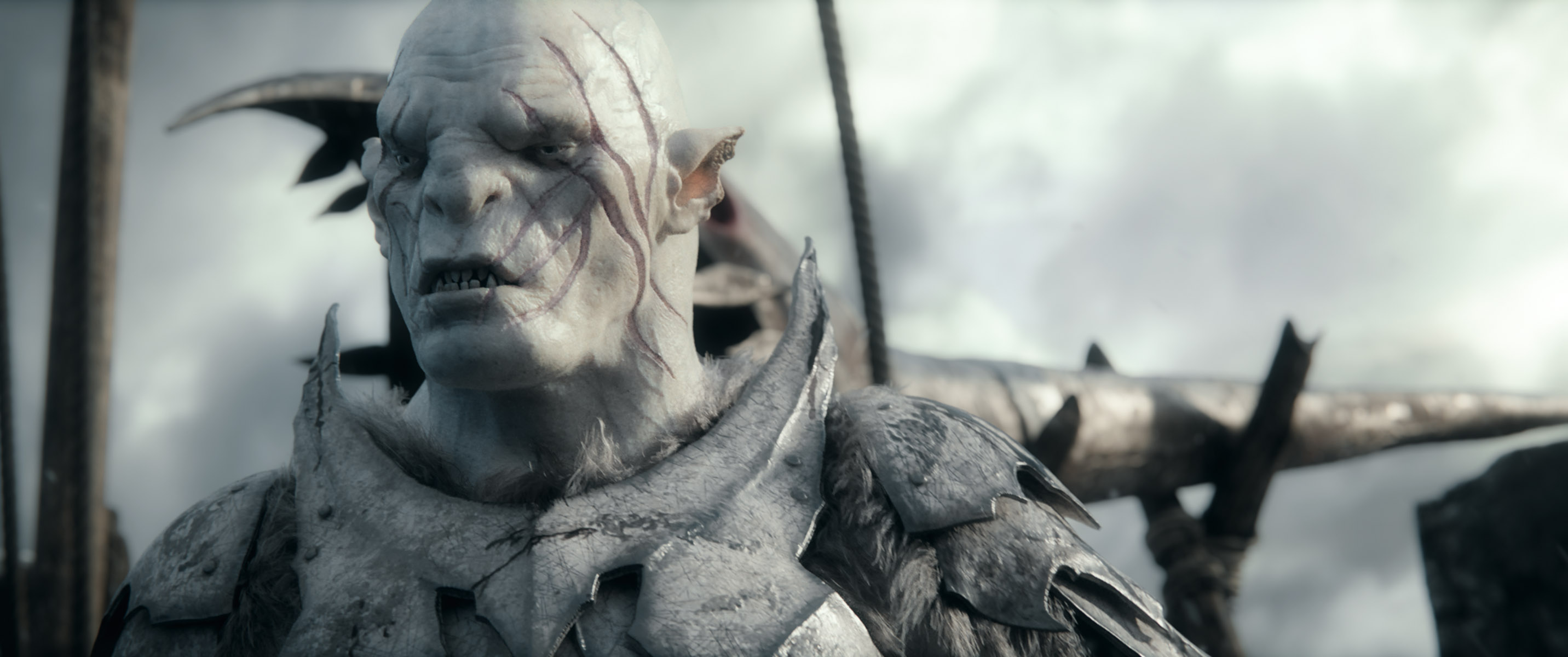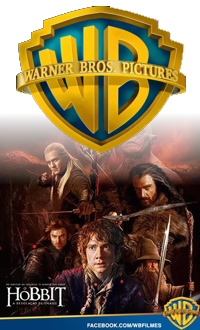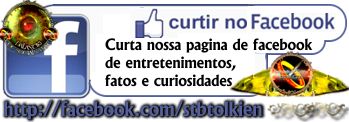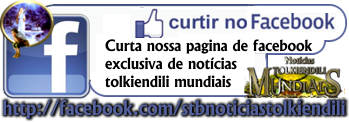I recently had the opportunity to speak with Doug Adams, author of The Music of the Lord of the Rings Films, and in this first part of the interview we talk about his experiences working on the The Lord of the Rings and The Hobbit trilogies, “The Last Goodbye”, the influences behind the music of Middle-earth and his journey that started 13 years ago with The Fellowship of the Ring.
Myla Malinalda: Can you tell us what your role is with the LOTR and Hobbit films?
Doug Adams: Sure, during the principal production, most of it is information gathering. Some of that ends up in the liner notes, and I help with some of the home video releases. But most of what I’m doing is being a fly on the wall and gathering as much information I can from scores and from Howard and the people behind the scenes. And then everything sort of goes into a very frantic schedule. When the movies are done for everybody else, I go to work.
I laughed on the LOTR films that we spent years and years and years collecting information and then years and years and years putting it all together and getting the book out and reaching for the light switch to say goodbye to Middle-earth. And everybody comes marching back in again after they’ve had a nice long rest, “Okay, let’s do this again!” It dovetails in a sort of weird way, but it keeps us busy.
MM: What was your experience like when you were working with the LOTR films? Was it different or was it kind of the same for The Hobbit?
DA: It’s both the same and different. With LOTR I was right out of school and it was the shock of being able to sit at the grown up table. It was all the things I’d always wanted to learn about. And things that you study in school and all that, you get to see firsthand. It sort of blows your mind. I was only a few years out of grad school sitting at, you know, Abbey Road, and watching the orchestra and chorus perform everything. So it was mind-boggling.
For The Hobbit, you’re a little bit better prepared in that you sort of know the ropes and you know the people and you know the industry a little bit better. But it’s also faster paced because you’ve been sitting at that grown up table for a while so they expect you to get in there and get your work done. You can’t ask all the beginner questions anymore. But that doesn’t make it any less of a thrill or less of a privilege to be able to be involved, because you are really seeing artists working at their highest level and that’s hugely inspiring to be around. Both from the filmmaking side and the music side, it’s just incredible. It’s a gift, it really is.
MM: Did it just feel like going back to something so familiar, did everybody feel that?
DA: We kind of really never left. The last LOTR picture was in 2003, and after that we spent 3 years doing the boxed sets of the complete recordings. Then the book picked up speed during all of that, and we really didn’t get the book to market until 2010. Following the release, there’s little bits of press that comes with it, and a few publicity tours. It really very much was like we’re kind of sitting down and putting our feet up and everyone going, “Okay, wait! We’ve got one more series to do. Let’s do this one more time.” So there really wasn’t that sort of down time. The filmmakers all left Middle-earth and came back, but I think on the music end we were all there everyday. One way or another we never got out.
MM: So this has just been one long project for you!
DA:Haha, yeah we’ve been here a long time. Certainly Howard and his crew have gone and done some wonderful things in between, and I’ve been lucky enough to do things in between as well. But it is something that you’re working on every day. Even as I’ve done these other projects, there’s been a little part of my mind thinking, “Let me get back to Hobbit.” So you know, you’re always there, you’re always kind of there.
MM: That’s kind of comforting – well I don’t know if that’s comforting to you, haha, but it is for me.
DA: Haha, no, no it is. There is a comfort there. And we’ll be there for a while yet. There are wonderful live performances coming up and all sorts of projects. It’s not a bad thing that we’re always kind of in Middle-earth. It gives you a home base as you reach out and do other things. Maybe in a way it gives you the bravery to try some things you might not have otherwise tried because you know you can go back to this place where you understand the parameters a little bit better.
MM: In An Unexpected Journey, there are familiar themes, obvious ones like for the Shire and Rivendell. But there are other moments where you would hear something and recognize it from LOTR, like at the end during Thorin and Azog’s fight.
DA:Film scoring is a collaborative process, it’s not purely the decisions of the composer and it’s not purely the decisions of the director, the filmmakers, and the producers. Film music has always been incredibly collaborative; sometimes that causes little tweaks in the production and sometimes that causes larger changes. The end of AUJ was always something that they had to feel out when they got there. There wasn’t a real chance to pre-plan that because that wasn’t the end of the movie when they began their journey. That was partway through the first of two films. The original break point I believe was right after they got to Bard at the shores of the lake before they went to Lake-town. So that was just sort of a little bump in the road before they got into the rest. They were supposed to go right to Beorn and Mirkwood and the elves and all of that.
They spent a long time trying to shape that because it had some of that emotional beat to it. It took a lot of work because that was something that happened after they were already working on the project; scoring had begun, the editing and filmmaking was all happening in New Zealand while the scoring was happening in London. That’s a lot of the reasons they moved everything to New Zealand, to record the orchestra there for parts two and three. It is very hard to communicate because you’re losing a day with the time change in between, it slows everything down.
So I think what you’re seeing there basically are two takes on the same scene. I think you’re looking at something that’s more viewed through a musical lens as maybe what you get on an album, and something that’s more viewed through a dramatic or filmmaking lens. They’re both the work of two artists, Howard writing the music and Peter making the film, and they have to collaborate. It’s sort of a sliding scale of who’s controlling more of this and more of that.
And the Ringwraith music there at the end has been cause for countless discussions over the past couple years, and angry accusations and everything else you can imagine. I think the idea there was just to add a bit of darkness to the scene. People are always wondering what that theme has to do with dwarves, “It’s a Mordor theme.” But they always kind of forget who the other character is in that scene, Azog is aligned with the Necromancer who, spoiler alert, we learn a bit about what his story is, so there’s that connection there. Is it a direct line saying, “This theme goes to him because he’s related”? No. It’s little bit more tenuous than it usually is. But that was the idea there. I can’t speak for anyone else but to me the true versions of those moments are what we hear on the album, the original scoring that went with those. To me that’s the one that makes the most sense musically. Some people love that moment, some people got very confused by it. I know that it was a strong thematic connection that became the head-scratcher for people. I certainly understand the confusion.
MM: For the “Misty Mountains” song, was there a big process that went into that, to create this song that would end up being very iconic to the trilogy?
DA:That’s actually not a Howard Shore melody.
MM: Do you know his opinion on it? Because the melody is used in some of his orchestrations, I’m curious to hear what he thought about the song.
DA:In the first film, that theme shows up quite a bit. It sort of represents the first leg of the dwarves’ journey. It takes them up quite literally to the Misty Mountains. You don’t really get that film back in the second and third installments. It was something that added a little bit of mythology to the dwarves, and it was good to use it in that early part of their quest. The purpose of the dwarves’ quest becomes clear, too, as time goes on in the filmmaking. That’s one of the things from my personal opinion is tricky for adapting The Hobbit into film form. In the book sometimes you wonder, “Do the dwarves just want a bunch of gold? Why am I rooting for them, that’s seems a little bit greedy. So what’s the bigger quest here?” The filmmakers tried to play that up quite a bit to show that they had a stake in the leadership of the dwarf culture and how that affected Middle-earth at large.
That song, it was written by the members of Plan9, which is a sort of musical collective down in New Zealand and they worked on the LOTR films. They provided the party music at Bilbo’s 111th birthday party. They’re a bunch of very fine musicians.
MM: Oh, they did “Flaming Red Hair”!
DA:Yeah, “Flaming Red Hair,” and last year in The Desolation of Smaug they did that little squeaky brass fanfare that sends the dwarves off.
MM: I have a friend who really likes that theme.
DA:Oh great, okay haha. You can tell your friend that one of the instruments that you see being performed there is a very ancient one that’s called a serpent. That seems very appropriate to send them off to the dragon with a serpent.
And Plan9 is still working; I actually just saw that they’re doing a vampire Mockumentary, What We Do In The Shadows. They’re very active, and they provided the melody because they did all the, or much of the, on-set diegetic music, things that occur within the story of the film. Everybody kind of fell in love with that melody in the first picture, so the thought became that we can fit this into the score and create a nice through line between what you hear the dwarves singing and the what the orchestra actually does.
That’s another one too where there’s a little bit of a difference, you hear a little bit more of that in the film than the album. There’s a couple of other thematic ideas on the album that they decided to push the “Misty Mountains” song a little bit more in the film mix. That’s where that song came from, it’s not Howard’s original melody but he did the orchestral settings of it. It’s a very common thing for composers to take a pre-existing folk melody and set it like a big orchestral guise. So this is like a modern day equivalent I think, that you have a newly invented folk melody that’s worked into a big orchestral setting.
MM: What were the influences behind Lake-town, Mirkwood, and Erebor? Mirkwood sounds creepy like I expected, and I really love the Lake-town theme.
DA:For Lake-town they wanted to have a very almost British type of sound to it. The line everyone uses is like “smugglers in Cornwall.” It’s got that old British nautical feel to it – I often think it feels like a work song. You can picture somebody pulling a rope – I’m a musician I don’t know how to run a ship, haha – but I’m sure you pull a rope or something. There’s hard work involved, I’m sure, and a beat would probably help you do it. It has a lot of repeated pitches, you can almost easily picture some sort of lyric that went with it. It sounds like something that has a heave ho element to it.
And Mirkwood, yeah you’re right, it’s very creepy, very dark type of theme. It’s very short because it’s very malleable, it comes back in a lot of strange settings. The idea of that setting is that it’s more about the orchestral dressing than about a specific theme because it has that psychedelic trippy feel to it. There’s a lot of improvisation in the orchestra where people are given, say, five notes and will be told to play them in any order and duration. So it creates that very losing-your-head feeling.
Erebor on the other hand, Erebor is one that has a relationship to what came before in LOTR because you have little bits of Dwarvish music in there. Dwarves have that emotional side to them, but in their proudest moments they’re very squared off and rigorous. They don’t like to be overly expressive. The Erebor theme is just six pitches, one of which stays in the same place while the other keeps rising up each time. It’s very simple and very basic. The dwarves do have a softer more emotional side, although that also comes out of LOTR because you get a little bit of that from Dwarrowdelf. And now you have things relating to the lineage of the heirs of Durin, it’s very masculine and stiff upper lip, full of itself type of thing. But it has more of an emotional quality to it I think.
MM: Was Howard excited to have this chance to go explore this world of dwarves that he didn’t get to do so much in LOTR?
DA:Yeah, he’s pretty much in love with Tolkien’s writing, a lot of the things that Tolkien thought were important not only in terms of the mythology, but just the subtext of things. The sanctity of family and the importance of nature, those are all things that Howard values as well. He also just loves Tolkien’s use of language, so I think the more corners he gets to explore within Middle-earth, the happier he is. The dwarves presented a great opportunity to really flesh out a culture you only saw a tiny bit in LOTR. You had Gimli, Dwarrowdelf and Moria and that was kind of it. You had this sense of a larger culture behind all of that but Howard didn’t have a chance to look at that. And this time you have the dwarves front and center, almost more than anything else within this storytelling. Musically I think it’s easy to argue that you get more Dwarvish music in the three Hobbitscores than any other culture. You’ve got your fair share of Men, Elves and of course Bilbo is your conduit to the Shire. The Hobbit films are a really big exploration of Dwarvish music.
MM: Have you had the chance to see the final cut of The Battle of the Five Armies?
DA:I saw the full cut as it stood in the beginning of October. My procedure for these films is that I take a trip to Howard’s offices in early autumn. It’s around the time they start getting materials back from recording sessions and they have some orchestral mixes to show me. What I’ll do is sit down and watch reel by reel the film as it stands at that point with as much music as they can synchronize to it in place. Usually that means there’s going to be a little bit of the mock up still there. Film three was almost all orchestral by the time I showed up and most of the sessions had come in from New Zealand. Film two was very much a mix of orchestral and maybe more mock ups. Film one I think was almost all mock ups because I got there a little bit earlier in the process.
Back to BOTFA, I sat and I watched that and I spent a few days out there to start working on the liner notes. And then I come back to my office and start piecing together the liner notes and start discussions as to what other materials might be cool in there for DOS. We had a bunch of Howard’s handwritten music examples and I think we’re going to do that again on part three. Well I know we did that for part three, people can see that soon. Then you have to route everything through the studio and filmmakers and I’d occasionally get a note or two from Peter Jackson if he didn’t want me to include something. They’re very touchy about that, and understandably so, they want to make sure that we don’t get into spoilers. You don’t want everyone to find out beat-by-beat what happens in the film a week before it comes out.
MM: I’ve been trying really hard not to see any spoilers, I’m even avoiding TV spots!
DA:They’re tough to avoid. You could go buy a Happy Meal and find out the end of the story, you have to be careful. There’s a lot in this that people probably won’t expect, and I know they’ve started the preview screenings, but I think the people conscientiously avoiding spoilers still have quite a few surprises in store for them. They’re well made films, they keep your attention and they keep you wondering what will happen next even if you think you know what will.
MM: So will you be watching it with everyone else on opening day?
DA:Yeah I’ll go see it in the theater and sit there with my goofy looking 3D glasses like everybody else!
MM: Do you think you’ll do the midnight release or the early marathon viewing?
DA:Well I’m in writing mode now and I have some really tough deadlines to meet on this particular project which may or may not be directly involved with the whole Middle-earth thing. I’m trying to mine my time carefully, and like everyone else I have holiday stuff to take care of. I’m trying to fit everything in but I don’t think I’ll do a midnight screening, I’ll definitely see it on opening night.
You know it’s funny, there’s always a few things that change between the October cut and the final release. Like with DOS, when I got to the theater I realized that I’d seen most of the extended edition scenes. And I kept looking around thinking “Where’s Thrain, what happened to him? Thrain’s gone!” I was very confused by that, haha. There were actually some scenes in the cut I saw that didn’t make it into either version. There was a scene originally in DOS that involved a palantir that was not used in the film. When I saw it I thought, “Oh okay, they’re going to put that into the story.” I’m glad I didn’t put that into the liner notes because that would have confused a lot of people. There are always some cool surprises!
For BOTFA,there’s so much effects work in this because you know, giant battle with orcs and everyone else, it’s just huge. So the effects when I see them, they’re not completely done. There’s a lot of old Nintendo 64 looking graphics and most of the Smaug scenes that I saw were literally the word “dragon” floating around on screen. I’m assuming that’s not in the final version. I’d like to think they’d polish that up a little, hopefully!
MM: And you know Peter Jackson, he’s going to work until it’s just not possible anymore!
DA:Yeah, it’ll be fun to see where everything landed. And then I’ll come back to my computer and keep typing about it and see if I got any of it right.
MM: Are there any tracks from the LOTR or Hobbit soundtracks that you are the most attached to? Any you find yourself humming all the time?
DA:I don’t think I’m ever not humming one of the tracks. It’s funny, at a certain point they become like home movies. I have so many unique associations with individual themes and moments that it kind of depends on what mood you’re in and what’s happening in your life. Back in 2001, Howard originally asked me to do something with these projects in May before The Fellowship of the Ring came out, and I didn’t hear anything back over the summer. And then I’m thinking, “Oh, no one wants to do anything.” Now I understand how it works, everybody is just writing their brains out at that point and trying to get everything done in time.
Then in October I received a package from Abbey Road along with a note from Howard saying: “This is for your ears only, it’s the first copy of FOTR,let me know what you think, let’s talk about this.” And I remember sitting down and listening to the strands of the Shire theme for the very first time. Now every time I play that piece it takes me back to Tolkien’s Shire and my own Shire, my little bedroom that I had at that point in my life, and what that was like back then.
For “The Lighting of the Beacons” from The Return of the King, I’m sitting with the orchestra. The recording sessions for ROTKwas done in London. When the whole of Gondor bows down to the hobbits I’m sitting behind the tuba! I’m sitting in that orchestra, I’m not making any sound because I would have been kicked out but I know I’m in that. To me they’re very emotional moments that I remember, just very heartwarming memories.
The first thing I did with The Hobbit, I showed up in New York in 2012, and Howard was still scoring in London at that point. I was there with the staff in his office, they let me in first thing in the morning. Howard has a little listening room in the back of the office and I went and knocked on the door to see who was home and to say hello. The door creaked open and on the screen is old Bilbo sitting at his desk doing his calligraphy as the Shire theme plays. I live in Chicago, but to me seeing that on the screen, it was like I’m home again. It was beautiful, it’s the perfect way to ease into The Hobbit, to see Bilbo working away. All those things have such personal connections, it’s an amazing thing.
ROTK was the first time I ever traveled out of the country by myself. I was there in early to mid-September, so they had a few weeks of scoring left. They hadn’t done the last bits of the film, I think they were up to the coronation scene. I hadn’t heard the end credits song yet, “Into the West”. I’d seen the sheet music kind of stacked in the back in the piles getting ready to come out at some point. So I’d looked it over and I knew what was coming, but when I heard that song it just about reduced me to tears. It was like I had gone on my own adventure and come back.
I think that’s why Tolkien is just so beloved because all those things are such basic human things. It’s a fantasy world, a very complex one, and he understood very basic feelings and what’s important to us. The idea of home, family, hearth, nature and relating to our friends and the world around us. The feeling of imagining ourselves as having to step outside of own personal spheres and do something in the bigger world. Those are things everybody deals with. It doesn’t matter if you have pointy ears or not, everybody understands that. That’s the thing that Howard got so right with the music, you always have that sense of humanity. Everything is touched with that beautiful humanity. I think that’s why they speak to everyone and those moments you can relate them to your own lives. I haven’t defeated dragons but I’ve had my own forms of adventures and you can relate the music to that. People have very personal relationships with that, I’m sure you find that in your readership. People feel like, “That’s my theme, that Shire theme? That’s for me, that’s mine!” And that’s cool, it’s great that people feel that way, I like that.
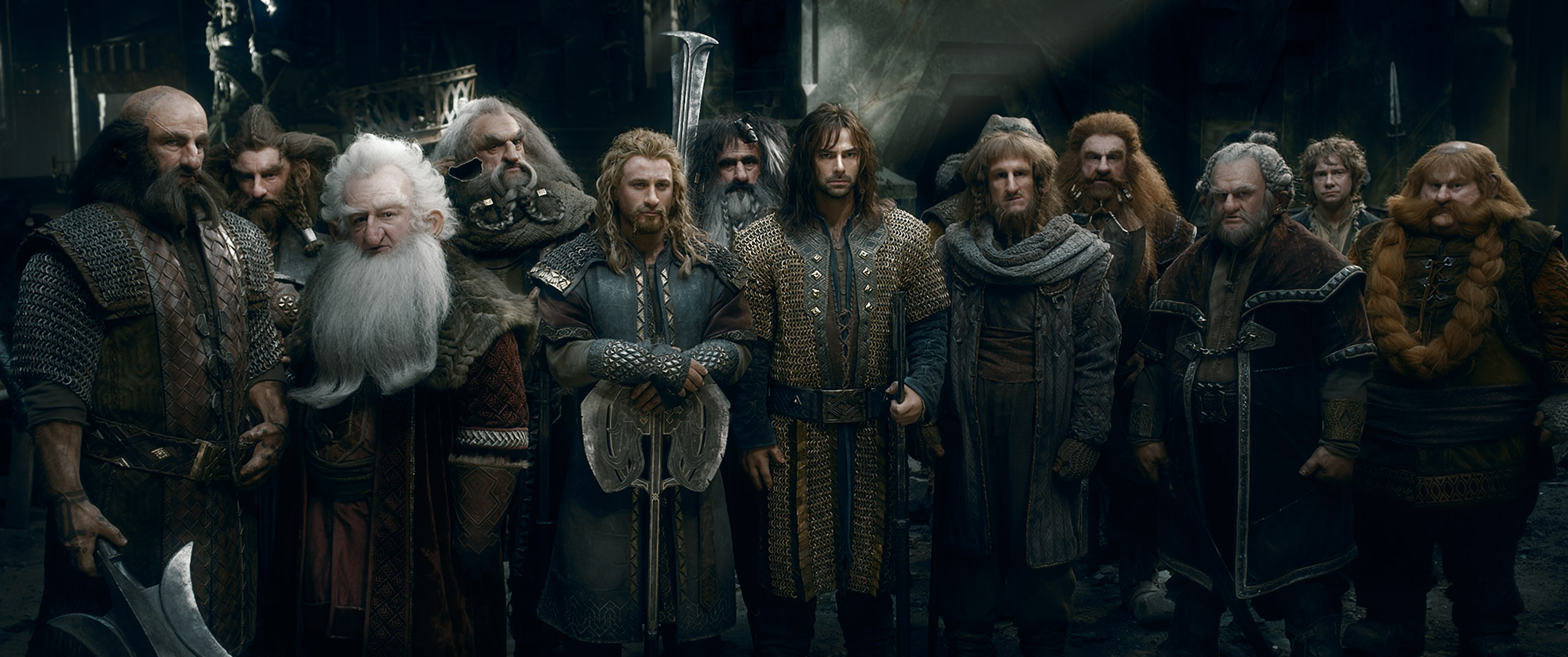
Aragorn’s Coronation scene from “The Return of the King”
MM: I get emotional enough just listening to the songs from the lighting of the beacons or coronation scene, and you were there when it was being made!
DA:Haha, the songs belong to everybody and Howard gets that too. He could easily say, “No, it’s mine! I wrote all this stuff,” but he knows that in a sense it belongs to everyone now. People have incredibly important and tender moments tied up with all that. It’s a sign of great art.
MM: “The Last Goodbye” came out pretty recently, did you get to hear it before it came out for the public?
DA:I didn’t! I saw you at New York Comic Con, right? So you remember that Howard and I had to do a very quick goodbye after the panel. We were going to stop and say hi to everyone and maybe go upstairs to some of the booths but he had to run and that’s what he had to go back and do. He had to oversee and kind of check in on the recording sessions for “The Last Goodbye”. He’s not one of the composers on that, but they certainly checked with him and ran things by him. NYCC was exactly when the song was coming together. So that’s another one when I was told everything and shown what the song was going to be, but I didn’t hear it until everyone else did.
MM: What was that like?
DA:It was pretty emotional too. It’s a weird point in the project for me, because there is that sense of finality but from my end it’s like I have to start working, haha. “The Last Goodbye” is the first hello from me, this is where I really crank into high gear. I’m like the post-post-production over here. So now I’m going at full speed and everyone else is doing their tearful farewells and I’m mainlining caffeine and trying to write through the night. It’s a weird emotion, I’m sure at some point in the next year I’ll have my moment of “Oh wow I’m really putting this on a shelf and finishing it up.” Or maybe not you know, I’m still to this day being privileged enough to show up at these concerts and do pre-concert talks and things like that. This stuff could take me into my old age, I don’t know. It might just never go away and that’s fine by me.
MM: What I love about “The Last Goodbye” is that it’s a goodbye not only from Bilbo, it’s also from the cast and crew from the films. It also relates to the fandom because we’ve all been on this journey together and now we can say goodbye to these films that have had such a big impact on our lives. I think everything with LOTR and The Hobbit does such a good job of bringing people together.
DA:I think that was very much the idea, it’s a goodbye within the world and it’s a goodbye from the outside of it. The characters of Middle-earth are saying goodbye but so are the people who put them on screen and provided the music. It’s a hugely emotional time for people and it’s a little bit of a relief. Everyone feels like they’ve been going full speed for however many years now. It’s a long process, so there’s that relief of “Ahh, sunlight. I can get 8 hours of sleep again!” or at least some people can.

